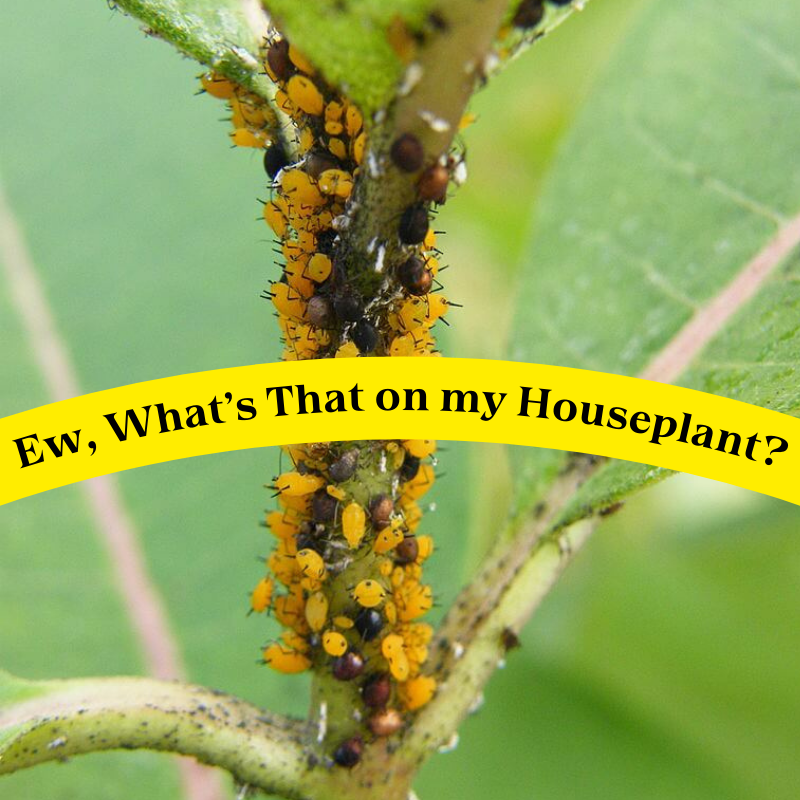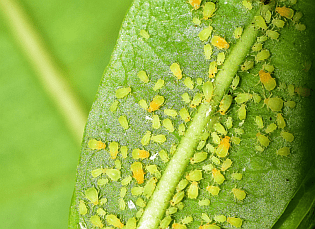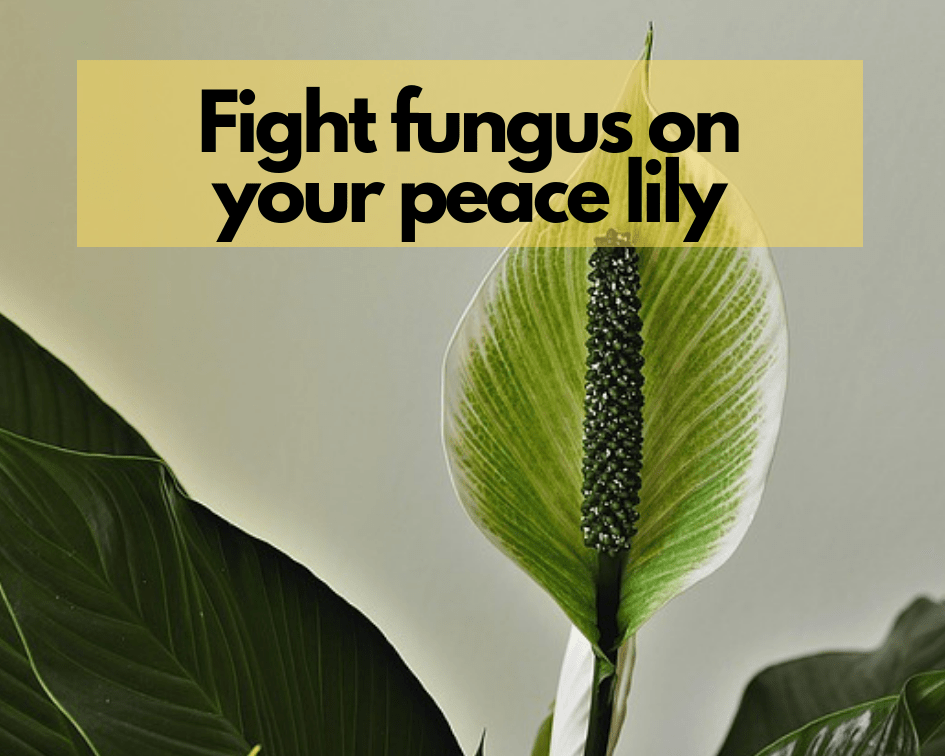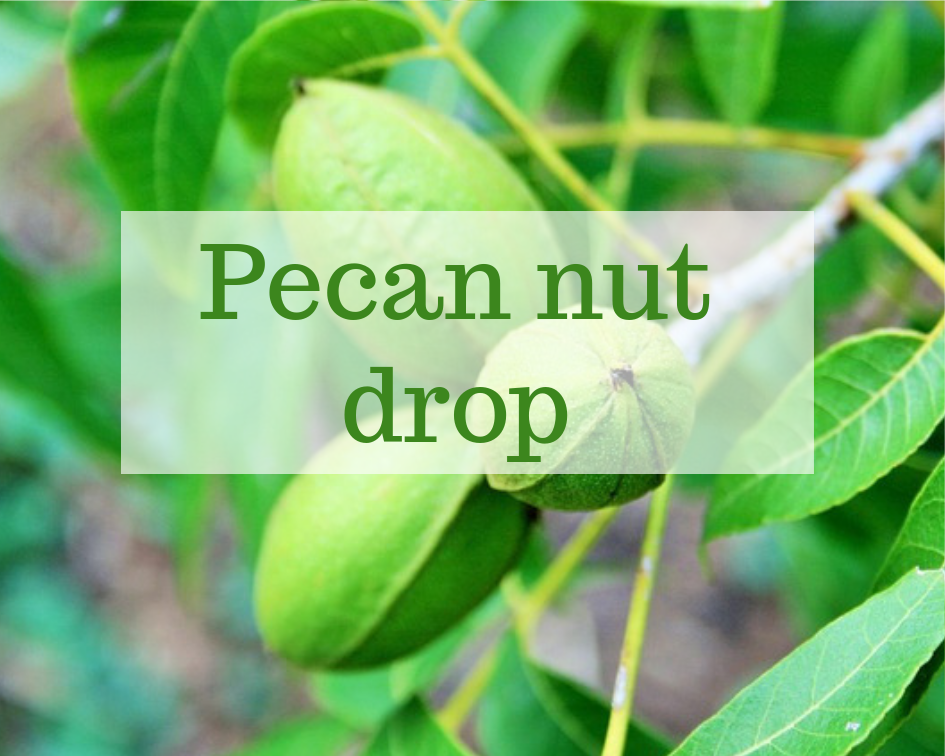This post may contain affiliate links. As an Amazon Associate we earn from qualifying purchases.
How does this happen? Aphids on houseplants, believe it or not, are common. Let’s get rid of them!
Ew! WTH is that on my plant?
We hear this from our customers at least twice a week, accompanied by a photo of a poor plant infested with spider mites, scale, mealy bugs or aphids.
Today we’ll take a deep dive in the latter – everything you need to know to do battle with those soft-bodied critters with the piercing, sucking mouthparts.
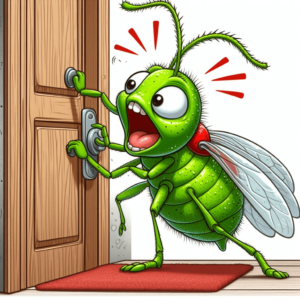 How do aphids get inside my home?
How do aphids get inside my home?
Another frequently-asked question and we get it. Aphids are plant pests so why don’t they stay outside where there are more plants for them to destroy? How do they sneak indoors?
There are several ways to get aphids on houseplants:
- On new plants you bring home
- On your clothing
- When you bring your summer-outdoors houseplants in for the winter
- Through an open window or door
Once they’re indoors, they will find their way to your plants.
Partheno-WHAT?
Parthenogenisis. It’s a fancy way of saying “she got pregnant without having sex.” Thus, the success of the aphid.
Most are actually born pregnant.
Sure, she can meet a guy, fall in aphidy love and get her eggs fertilized. But, often, she just prefers to do it without the help of a man. Especially when she’s indoors and all the bros are outside.
In fact, female aphids are so good at procreation, that absent disease and predators, one female aphid is capable of producing 600 billion offspring in one single season, according to Stephen A. Marshall, author and professor of entomology at the University of Guelph.
To make matters worse, aphids produced in spring and summer are almost always female.
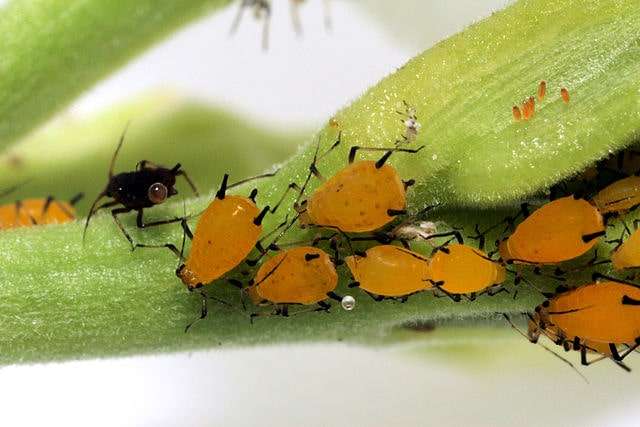
First, make sure the critters are aphids
New plant parents often find distinguishing one insect from another challenging. Once you’ve done battle with a particular pest, however, you will never again fail to recognize it.
Despite popular conjecture, not all aphids are white; they may be green, pink, yellow, black, red and a host of other colors.
If the pests on your plant are tiny, clustered together and located on new growth or under leaves, they may just be aphids.
You may also see aphid symptoms on the plant’s leaves. Look for the following:
- Shiny, sticky substance on the leaves. This is known as honeydew and it’s produced by aphids, mealybugs, whiteflies, scale and other leaf-sucking pests.
- A sudden infestation of ants in and around the plant. Ants are attracted to honeydew and they may sense it before you can see it.
- The presence of black sooty mold – it often grows on the honeydew.
- Wilting or distorted growth, especially new growth.
- Yellowing and death of leaves.
Let’s declare war on aphids
It’s a whole lot easier to rid an outdoor plant of aphids than one located in the home. Outside, a strong blast of water is often all that’s necessary to get them off the plant.
If your plant is small, take it outside and blast the buggers off of it. Otherwise, you’ll need to arm yourself with the proper weapons. If you value and love your plant, here’s what you should not include in your arsenal:
- Dishwashing liquid, even if it’s blue
- Rubbing alcohol
- Cotton swabs
- Homemade solutions you read online from some rando gardener
What you should include in your arsenal:
- Pruners or snips
- Commercial insecticidal soap spray or
- Neem oil
Use the pruners or snips to remove parts of the plant that have an overly-heavy infestation. Bag up what you’ve removed and dispose of it.
Spray the remaining aphids on your houseplant with your chosen solution (insecticidal soap or neem oil). You must make contact with the bugs, so spray strategically. Follow all cautions and instructions listed on the label.
You may need to reapply the pesticide in three to four days to get the infestation under control. In the meantime, keep the plant in a shady area where it will get no sun.
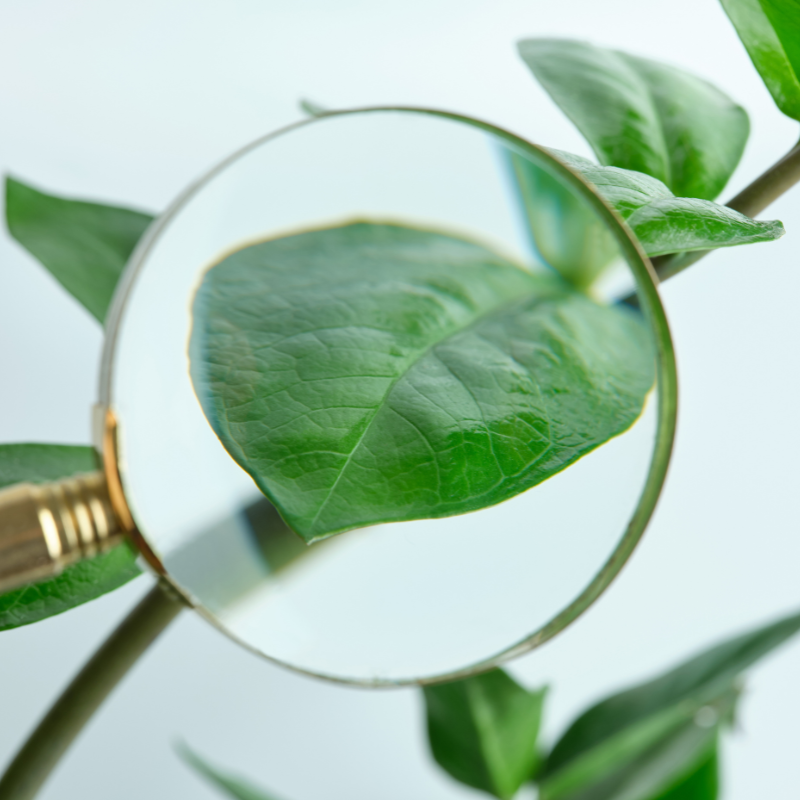 Change your ways
Change your ways
There is nothing like a pest infestation on a beloved houseplant to make us hyper-vigil. But don’t slack off. Make it a point to inspect your plants every week for signs of insects.
When you bring home a new plant baby, isolate it for at least two weeks, preferably in the garage. Check on it every couple of days for signs of creepy crawlies.
Do the same before you bring your summering-outside houseplants indoors.
Happy bug hunting!
Featured image: PookieFugglestein, CC0, via Wikimedia Commons
